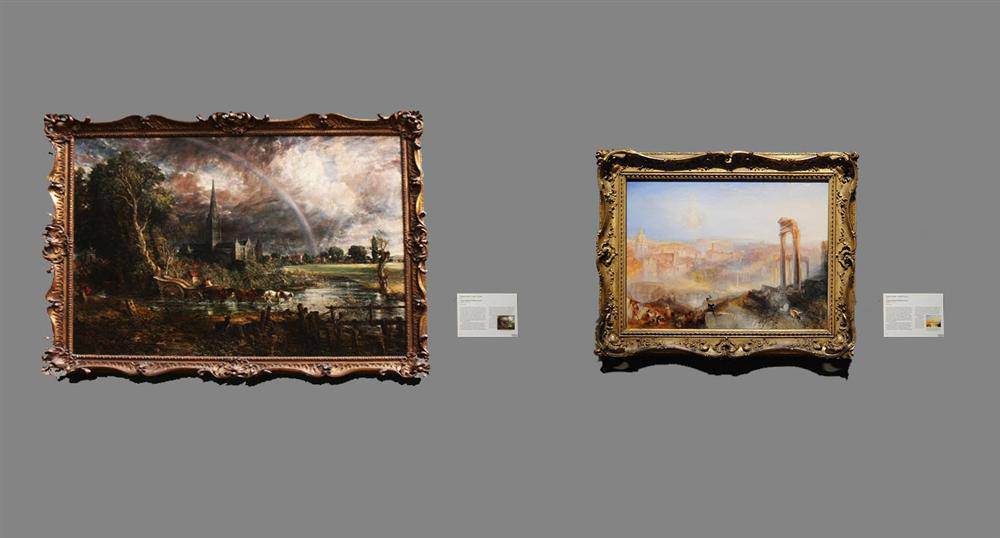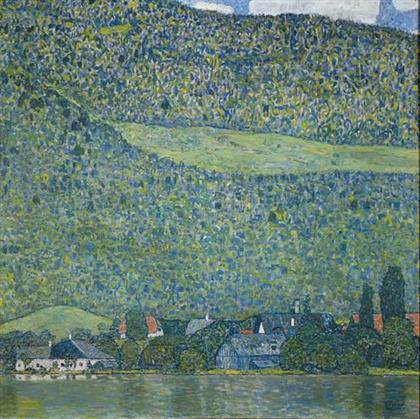
Constable’s “Salisbury Cathedral from the Meadows” hanging next to Turner’s “Modern Rome – Campo Vaccino”, acquired one year ago by the Getty for $45 million.
click on the image to enlarge

The Getty Center


Caravaggio: “The Lute Player” (left: Wildenstein version, right: ex-Badminton House version)

Albert Bierstadt: Yosemite
Getty Museum: acquisitions for a new era James Cuno, the new CEO and president of the J. Paul Getty Trust, has pointed out the importance of the new acquisitions for the future of the Getty Museum. theartwolf.com offers a few suggestions.]]>
By G. Fernández, August 2011
The “big” acquisitions
“Making major acquisitions is without doubt one of our greatest opportunities and challenges”, said Mr. Cuno to the Los Angeles Times. With a $5.3-billion endowment, the Getty is by far the wealthiest museum in the Western World. But even with so much ammunition in the arsenals, the future acquisitions should be really selective.
I know perfectly the masterwork I would target if I was in Mr. Cuno’s shoes. Even though I would be in a moral dilemma, as it would be a loss to my favorite museum worldwide, the National Gallery of London.
John Constable’s “Salisbury Cathedral from the Meadows” is not only the best painting by the artist still in private hands, but also one of the five or six best works by the artist. It would be a sensational acquisition for the Getty, taking into account that Constable is not represented in its collection.
The work -on loan to the National Gallery of London- is in the collection of the heirs of Lord Ashton of Hyde, who died in 2008. One year before his death, the Sunday Times included “Salisbury Cathedral” in its list of “important artworks at risk of being sold abroad” (with a “medium risk” tag), noting that Lord Ashton was unavailable for comment. It is not clear if the heirs would be willing to sell this supreme work (included at theartwolf’s list of most valuable paintings in private hands with an estimate of $50 – 75 million), and if that were the case, expect a temporary export ban on the painting.
Once again, I would really hate to see this painting leaving the National Gallery, but if I was the Getty CEO, it would be my number one target.
Even more ambitious than buying the Constable would be to try the acquisition of an important work by Caravaggio, one of the most important painters ever, whose work is not represented at the Getty. “The Lute Player” from the Wildenstein Collection (on loan to the Metropolitan Museum) is a supreme work, but it seems unlikely that the Wildenstein Family is willing to sell the painting – at least for a reasonable price.
Also, it is important to point out that there are some doubts about the attribution of the painting, and even more about the third version of the work, formerly at the Badminton House, and which Larry Salander tried to sell in 2007 for a staggering $100 million. These doubts also affect to the other two major works by the artist in private hands: the “Sacrifice of Isaac” from the Barbara Piasecka-Johnson Collection and the “Cardsharps” from the Collection of Sir Denis Mahon. If possible, a Caravaggio would rank among the most expensive acquisitions ever made by the Getty, and there should be absolutely no doubt about the authenticity of the painting.
More options? A major Frans Hals (if the “Portrait d’Isabella Coymans” is possible, go for it), or maybe a Botticelli: the “Rockefeller Madonna” is still available at Dickinson, but once again, the doubts about the attribution of the painting could be a “turn-off”.
New departments
“The collection [of the Getty Museum] is overwhelmingly European—there are no East Asian, African or South Pacific departments for example”, said Mr. Cuno, who is known to be a defender of encyclopedic museums.
So am I. World-class art museums should not be based on the personal taste of its founder or director. They should try to show the overwhelming richness and diversity of universal art. That is exactly the reason why I have criticised the recent acquisitions made by the Museo del Prado, while praising those by the National Gallery.
Also, establishing new departments is not economically inviable. For example, it is still possible to build a very important collection of top-quality tribal art for $20 – 25 million. As a reference, the sale of the Saul & Marsha Stanoff Collection of African & Pre-Columbian Art totaled $12 million at Sotheby’s in 2007.
If it were in my hand, I would also consider the creation of a Department of American Painting, with a special attention for the Western and Californian Painting. Albert Bierstadt’s sensational Californian landscapes (such as the “Yosemite Valley” sold in late 2003) would be a excellent addition to the most important Art Museum in California.
Jacques Louis David
Finally, Mr. Cuno has declared his admiration for the French Neoclassical painter Jacques-Louis David (1748-1825). Is this a hint for future acquisitions? David is quite well represented at the Getty, who owns an historical scene (“The Farewell of Telemachus and Eucharis”) and a fine female portrait (“Suzanne Le Peletier de Saint-Fargeau”), so he should not be on the “top targets” list. However, the privately owned “The Anger of Achilles” (1825, another version is owned by the Kimbell Art Museum) is a “top museum-quality” work, that kind of painting that any museum would love to own. The work was offered for sale at the TEFAF 2007, with an asking price of around $12 million, quite reasonable for a painting of such quality, although we ignore if the painting is still available.
G. Fernández, August 2011
Follow us on:


